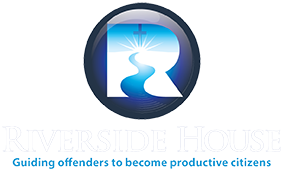By Cleveland Bell, Riverside House Executive Director
When all the trees are cut down to make way for progress, at least some of those trees are later replaced through reforestation. We don’t leave the environment stark and empty, but we try to restore the land so that it’s similar to what it was before being disrupted. As progress happens, this may look even better than before.
It’s no different for people, especially offenders. Restorative justice for them should be very similar. Everything gets stripped away through incarceration, but we have to go back in and restore that person to something similar to what they once were, hopefully even better. This involves the victim of the crime, the perpetrator of the crime, and the entire criminal justice system.
The big question here is after a sentence has been carried out, how do we get offenders back to the point where they can be successful with a job, with their families, in their communities, and as tax paying citizens? They probably already have skills and talents. For example, maybe they were great at selling drugs on the street. We can take that experience that was not used for good and turn it into a legitimate profession in sales where they may have a gift. It’s how you use the gift, not the gift itself. We build on the good instead of focusing on the bad to restore the lives of offenders.
We know they will never be the same as they were before, but we know they need a positive setting where they can be productive and reach these goals. At Riverside House, our goal is to help them get to a place that’s much better than where they were before their incarceration.
It’s something I know a lot about. We’ve all heard that we are products of our environment, and it is very true. My environment landed me in prison many years ago. If I knew then what I know now, my life could have been completely different. What we grow up with is what we learn, but it doesn’t mean we have to stay there. Today, I want to expose these issues, educate others about them, and equip us all to do better.
For me, I started to do better when I was in jail in 1969, and two local guys came and shared the love of Christ with me. It enabled me to take responsibility for my life. I had a chip on my shoulder about bad things that had happened to me, things that were not fair, and inequality.
But I finally realized the true meaning of the quote many people who have been through AA will be familiar with: “Holding onto anger is like drinking poison and expecting the other person to die.” I was only hurting myself, but the love of Christ saved me and allowed me to find restorative justice. If it worked for me, there have to be hundreds of thousands of other people out there it will work for as well.
For 40 years, I have seen our process work at Riverside House. I have seen God change so many lives, and he just keeps on going. To accomplish this restorative justice, we offer personalized programs that emphasize life issues such as employment, life skills, substance abuse counseling, and family. These are our in-house vehicles, but we also need the involvement of our community.
Our community relations board meets once a quarter, and we are always trying to bring new people in so they get a chance to see what we do and how we might collaborate together. We connect to the prison system, the education system, medical treatment, and just about every pillar of the community to accomplish our task of partnering with everyone we can to bring about restorative justice.
Restorative justice repairs the harm caused by crime. When victims, offenders, and community members meet to decide how to do that, the results can be transformational.
